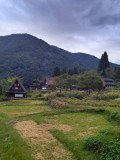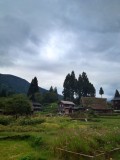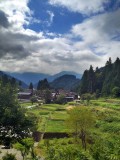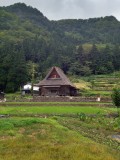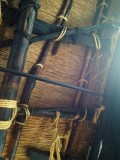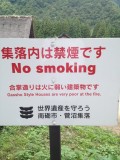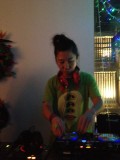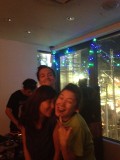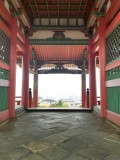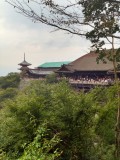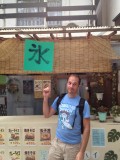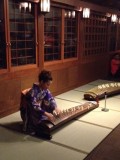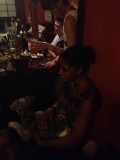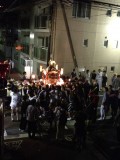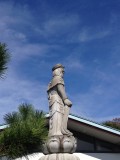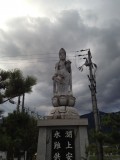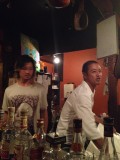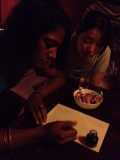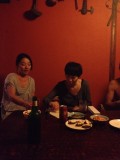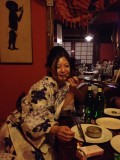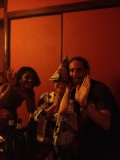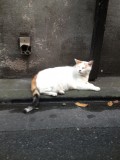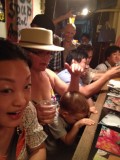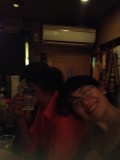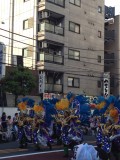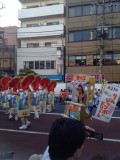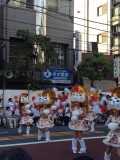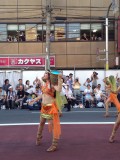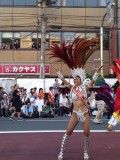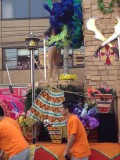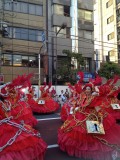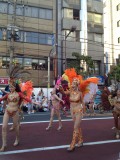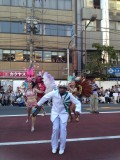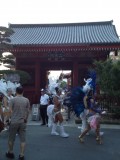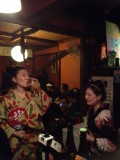 During all my years in Kyoto, I carefully avoided writing about my usual haunts for very selfish reasons. I guess now that I no longer have a vested interest in keeping them sparsely attended, I might as well share them with whomever ends up here.
During all my years in Kyoto, I carefully avoided writing about my usual haunts for very selfish reasons. I guess now that I no longer have a vested interest in keeping them sparsely attended, I might as well share them with whomever ends up here.
Note: For each entry, I tried linking to Google Map (when a listing existed) or whatever relevant page I could find with directions. For entries missing an address, try copy-pasting the Japanese name into Google Map and keep your eyes peeled for signs (keep in mind Japanese bars are often in the upper stories of non-descript buildings).
Note 2: Despite its relatively active nightlife for a city its size (thanks to a sizable student population), Kyoto is not a metropolis: do not expect crowds on weekdays. Depending on all sorts of factors, practically any place listed below is liable to be empty on any random day.
Gaea, aka Rei’s bar
By far my favourite place in Kyoto for drinks, food or conversation. Set in a traditional machiya that has been tastefully redecorated along the African sensibilities of the previous owner, the result is a low-key, friendly and warm izakaya-style bar where it is impossible to not feel at home. Rei (Kyoto’s Finnish-Japanese answer to Kurt Kobain) welcomes every new customer like an old friend (and indeed, most are or eventually become so). More than a neighbourhood bar, the place is a social club where a large extended family of friends and strangers-soon-to-be-friends meet up for casual chit-chat and regular food/music events (Facebook’s page of the bar is the best way to know about these). A funky Manson family, with less beards and way less gruesome murders.
Because the place is well hidden (better check the map twice), attendance on nights where no special events are taking place is very erratic: you might walk in the middle of some wild impromptu jam party or find yourself in small committee with Rei and the odd regular having a nightcap on their way home. If you do catch Rei on such an off-night, don’t miss the occasion to pick his brain on any item of local interest: the man is a living-yellow-pages of all things bar/music/food/fun-related in Kyoto and surrounding areas (and speaks perfect English).
Beside a few creative cocktails and reasonably-priced beer, the place has a small daily food menu (with more elaborate options available on special events, such as Mami’s infamous afternoon cake café event).
Frontières Sans Nations, aka Philippe’s bar
Another fixture amidst cosmopolitan kyotoites is Philippe’s cozy hole-in-the-wall bar along the canal street of Kiyamachi. With room for a dozen (thin) people at the best of times, it is not unusual to find the place packed on big nights, but generally there is always a spare stool or the edge of a bench for you to squeeze in (not the ideal place for large groups).
On most weeknights however, the atmosphere will tend toward a more intimate mix of Japanese and Foreigners (French/Europeans well represented), both in clientele and style, with a good selection of wines and home-cooked vegetarian dishes available.
Update 2013: Philippe moved to a (slightly) bigger location, still on Kiyamachi, but now south of Shijo.
Kazu bar
Easy to see why the place is so famous among Kyoto semi-underground drinking circles (and the strongly non-overlapping set of people who read the kind of fancy glossy travel magazines that lap up that sort of place): on the 3rd floor of a building tucked in a tiny back alley, no sign (no name), minimally decorated, well-stocked with exotic liquors and only lit with enough candles to ensure you can see as far as your drink on the table…
But despite its typical hipster-traveller appeal, the place is an authentically awesome bar, in no small part thanks to the eponymous Kazu: friendly, outgoing and quite often drunker than everybody else in the bar. Does your local barkeep spontaneously come up carrying enough takoyaki from his favourite nearby store to feed your entire table at 2am? I didn’t think so either.
“How to find it?”, you ask… Err, well, yea… You are probably gonna have to befriend some trendy locals (or ply me with the promise of free Gin&Tonic, on the next occasion I am in town). Failing that, it’s not gonna be an easy search. You can try going toward this place and looking up (good luck, it took me half-a-dozen times learning to get there without getting lost).
Milan’s and ING
When needing a change from intimate moods and underground vibes and looking for a bit more of a shot-bar party atmosphere, Milan’s bar is a pretty reliable choice: comfy middle eastern opium den meets cheesy hip-hop bar… Smoke a shisha, share a few shots with Milan (all drinks ¥500) and who knows where things can go from there.
If no amount of drinking can make you put up with shitty music, ING bar guarantees a much more palatable selection of rock classics (and less classics), with a student crowd and super-friendly staff (owner will gladly take music requests for your favourite bands and might even spontaneously play them again, the next time you show up).
More…
Of course, there are always the classics (those you have already read about a dozen times in every half-assed Kyoto guide): Café Indépendants is a nice place to grab a beer and some tasty food (cheap menu sets available on weekdays), but despite its nifty old-school cantina style, it is more of a place to chill-out on your own or with your own friends, than to meet new people.
A-Bar is the ever-reliable go-to place for travellers looking to socialise… with other travellers mostly (expect to see on average one Lonely Planet guide on each table) or large groups of students that would not fit anywhere else. A little overrated, but the beer is cheap and atmosphere convivial.
Grab a bite…
Too many good food options in Kyoto to even consider listing, but a few places I like in the vicinity of Kiyamachi (where all aforementioned bars are located):
大豊ラーメン [Taihō Ramen]
Hands-down my favourite ramen place in Kansai: cramped, scary-looking and of questionable hygiene standards, as any proper ramen place should be. Serves the fattest, most awesome, black pork-based ramen soup you will ever find (Kyushu style). Stick with the normal version and stay away from the shashū (extra pork) option, unless you fancy eating half a fattened pig with your noodles. Perfect after (or before) a night of clubbing and/or drinking. Located in a tiny alley, off Kiyamachi-dori.
彌光庵 [Mikoan]
The exact opposite of the previous place in every respect: cozy (albeit quite messy in its own way) bar/restaurant that specialises in vegetarian food similar to typical shōjin-ryori, at a fraction of the price (evening menu set for ¥1000). Super-friendly owner and equally friendly in-house cat. Also a good place for an evening tea in a jazzy atmosphere. Place is a bit hard to find (Google map): take a right from the main street and go up to the nondescript door at the end of the (ultra-narrow) alley.
石焼 石庵 [Ishiyaki Ishiori]
More traditional (and pricier) restaurant specialising in meat and fish grilled on a stone (at your table). Cool yet unpretentious setting and good food. Owner lived in San Francisco for many years and speaks fluent English.
Will add a few words about Kyoto’s two surviving nightclubs in a bit. Anyway: due to Kyoto mayor’s successful crackdown on nightlife, there isn’t much to talk about right now.
PS (2014): on my occasional visits back to Kyoto (and while getting a drink at some of the aforementioned locales), I have bumped in quite a few people who ended up there through this post. Which is really awesome. If you end up checking any of the above and like it (or not), do post a comment down here!
